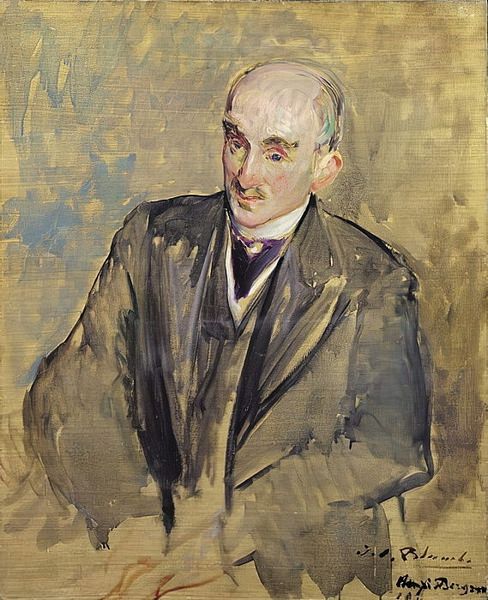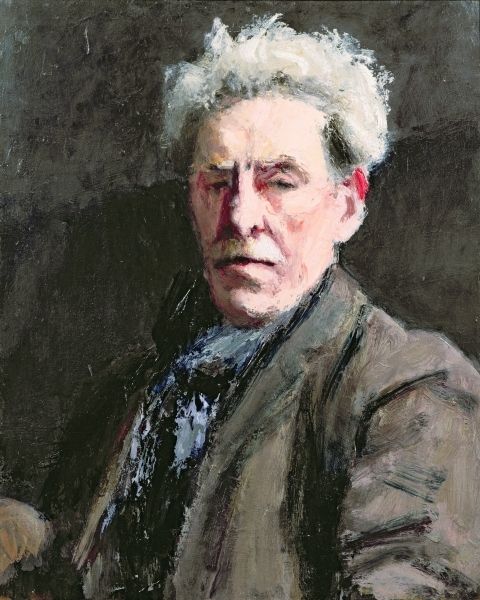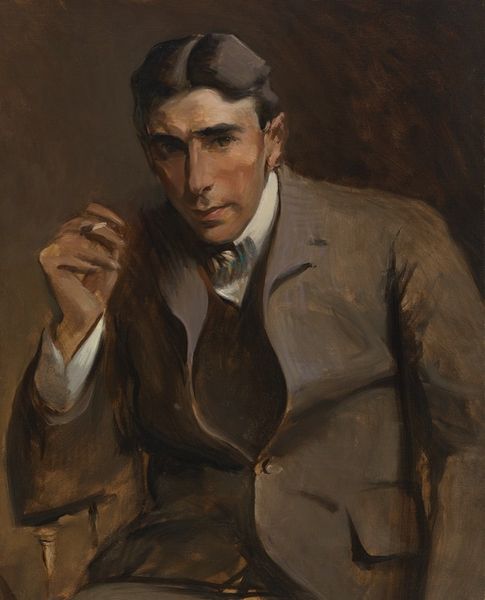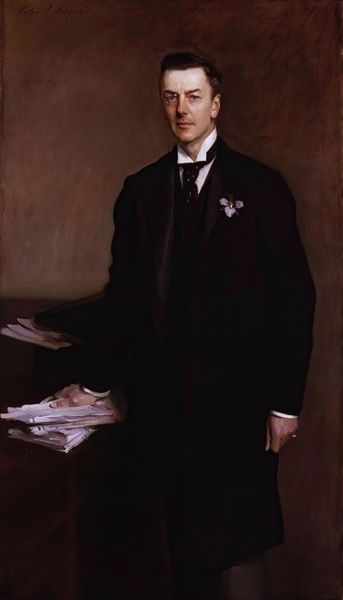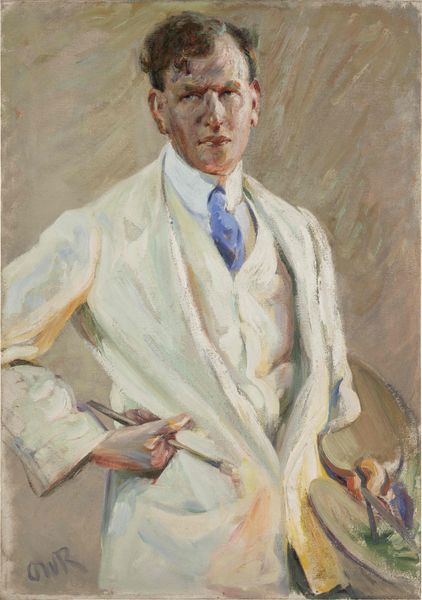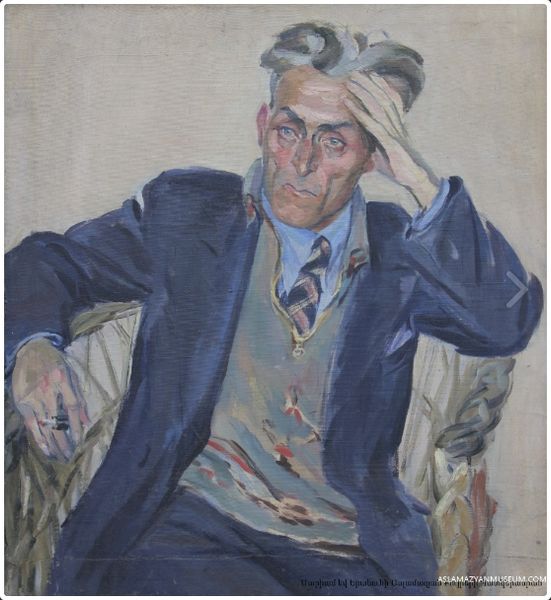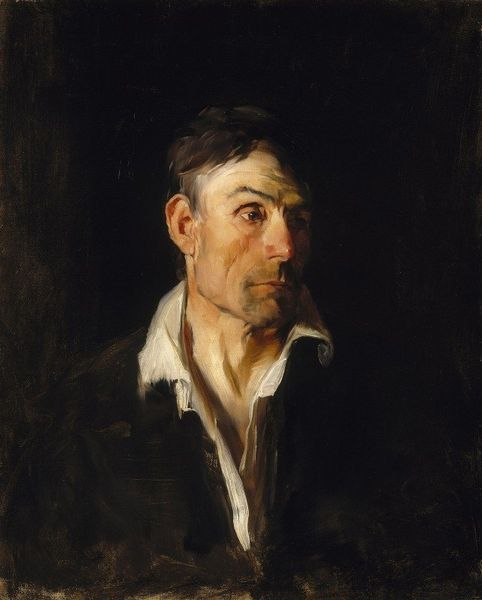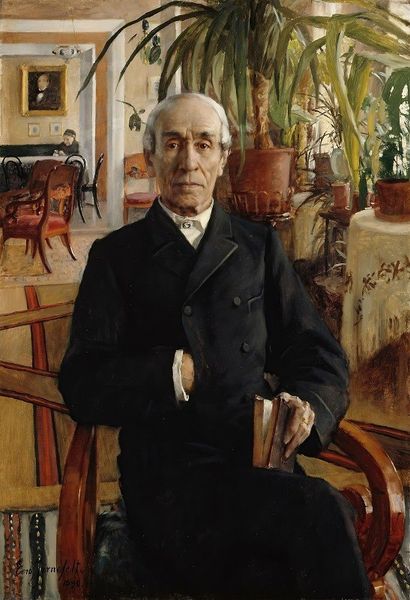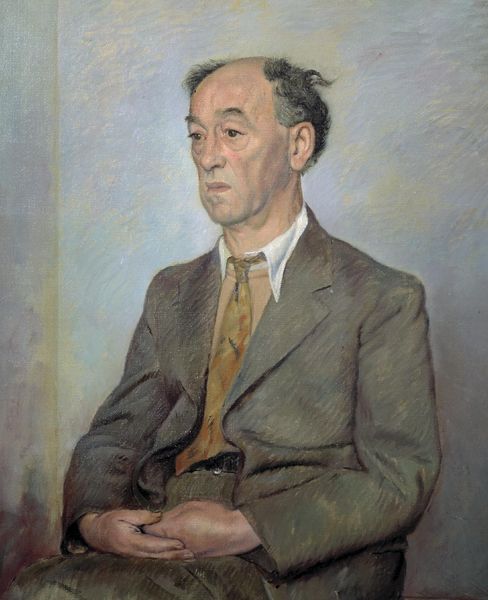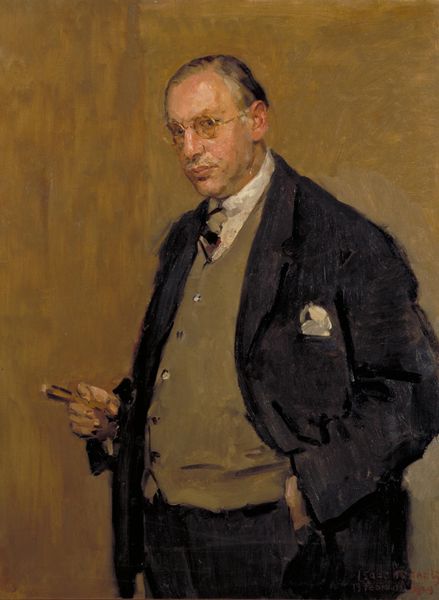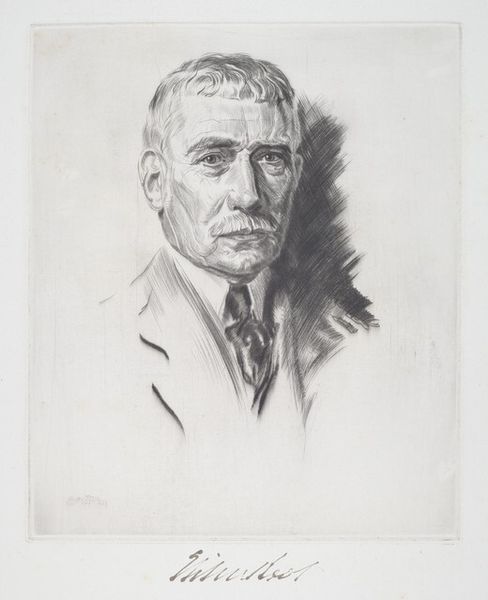
Copyright: Clyfford Still,Fair Use
Editor: This is Clyfford Still’s “Self-Portrait (PH-382),” painted in 1940 using oil. The striking contrast in color and light seems almost confrontational. How do you interpret this work, especially considering the materials used? Curator: We must consider how Still's choices—the viscosity of the oil paint, the support he chose, even the brushes—impact meaning. See how he layers the paint, almost obscuring form? It reflects a post-Depression era; artists, even when self-portraying, were laborers engaged in a *making*. Editor: That's interesting. So the materiality itself is key, more so than the subject's emotion? Curator: Indeed. Consider also the societal pressure on artists during that time to produce – to contribute. Still's layered technique could be read as both building and obscuring, a visible tension related to artistic labor. Do you see how his rendering denies access to any single reading? It’s actively being constructed before our eyes. Editor: Yes, the process seems so visible. It’s not just *what* he paints but *how* he paints it. How would his social standing impact his technique? Curator: Still's background as a professor certainly afforded him access to materials and a dedicated studio space, resources not universally available. This privilege inevitably shapes the outcome; the visible layering becomes not just aesthetic, but an index of production conditions. Editor: It reframes the artwork completely. Curator: Precisely! The materials aren't neutral; they're embedded with economic and social relations. By examining how Still manipulates them, we uncover another story embedded into art history. Editor: I'll never see another self-portrait the same way again. Curator: Hopefully so! Considering production transforms our encounter with these types of portraits and art more generally.
Comments
No comments
Be the first to comment and join the conversation on the ultimate creative platform.
